
Yesterday was appallingly wet. It rained and rained, and then rained some more. There were sheets of rain, and then there was drizzle, and then the clouds were so low they were at street level, and then the sheets of rain started again. So we hopped in the car and drove through Porto, past the impressive, compact FC Porto stadium and out the other side, heading for Guimaraes, the ancient capital of Portugal (above).
Portuguese drivers have a bad reputation, and there were a few hairy moments with crazy drivers on the motorway, but we got there safely. It was even wetter in Guimaraes, but that didn't spoil the beauty of this old town. We walked up to the beautifully preserved castle, where you can walk round the ramparts, as long as you have a head for heights (no guard rail here, as you can see in the picture below). Then we lunched well and cheaply on some typically Portuguese fare. I ordered a 25 cl jug of house red, and it was utterly fantastic - and just E1.25. It was a red Vinho Verde: amazingly bright red/purple in colour, with a bit of spritz and lovely vibrant, forward fruit. The acidity was really high, but in combination with the fruit this made it a brilliantly refreshing drop.
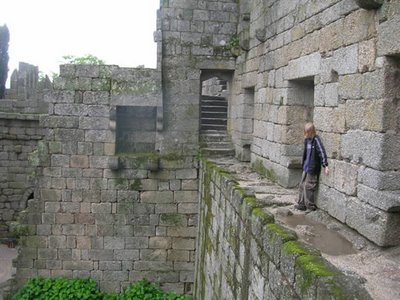
Then we were off to Dirk Niepoort's for dinner. It was brave of him to invite all four of us over. We were joined by Niepoort general manager José Teles and winemaker Luis Seabra. Time for a cellar raid. Dirk told me and Luis to pick something interesting, but he retained the right to veto. His cellar has a lot of Riesling, white Burgundy, red Burgundy (including a couple of rows of DRC), a bit of Rhone, quite a bit of Bordeaux and lots of old Portuguese bottles, as well as plenty of Port and Madeira.
So what did we drink?
Billaud Simon Chablis Grand Cru Vaudesir 2002
Fine, bready and minerally, this is fresh and bright yet rich and deep at the same time. Quite serious. 92/100
Bernard Van Berg Le Vin Le Plus Simplement 2005 Bourgogne Grand Ordinaire
This red Burgundy shows what you can do with a lowly terroir and yields of just 18 hl/ha. It's quite reductive (burnt match) along with vibrant red berry fruit. It's fresh and quite elegant with freshness and nice depth of fruit and a bit of meatiness. Very stylish for this appellation, and with a few years in bottle should shed its reductive youth and turn out very nice. 90/100
Caves S. Joao Reserva Particular 1959 Portugal
This old bottle is a blend of fruit from Bairrada and Dao. A deep colour with some brown hints, this has a wonderfully aromatic nose that is dark and meaty with a lovely spiciness. There's old wine complexity here, but it is still really alive, with bloody, iron-like notes in the background. There's also a bit of herby undergrowth character. Brilliant old wine. 94/100
Chapoutier Hermitage 1978
Very fresh and complex with minty, herby notes emerging, as well as some dark fruit character. This an appealing wine with brightness and elegance to the fore. It's not a big, heavy wine, but instead shows a precise, well focused personality, and you get the feeling that this has still got a bit more to give. 93/100
Niepoort Pinot Noir 2006 Douro
Still in cask, soon to be bottled. This is from the highest, coolest Niepoort vineyards, and this year Luis Seabra said he cut his holidays short to pick on the 24th August, to keep the wine fresh. It certainly is fresh, with bright, ripe red fruit character and a bit of mintiness. There's some elegance and nice texture, with hints of vanilla oak on the finish. This is actually pretty stylish. 89-93/100
Robustus 2004 Douro
Robustus was the name of Dirk's first table wine, made in 1990 (for more, see
here). This new Robustus is a wine made repeating many of the 'mistakes' Dirk made back in 1990, and it's fabulous. It's half Redoma, half Batuta fruit, bottled after four years in wood. Deep coloured, it has a fresh, pure dark fruits nose that leads to a focused palate with elegant fruit and some oak imprint. There's brilliant freshness here with good tannins. It's quite firm with lovely freshness and density. Serious stuff. 'Not a modern, fruit-driven, square wine', says Dirk. Just four 1200 litre barrels made. 94/100
Niepoort 1963 Vintage Port
We tasted this blind. The others were in the 1970s; I was in the 1960s but got no closer. It's mature, super-elegant, spicy and a bit floral. There's nice freshness here as well as a seamless texture. Almost perfect balance: this isn't a big, heavy wine at all. 95/100
Labels: bairrada, Douro, Northern Rhone, Port, Portugal, travel
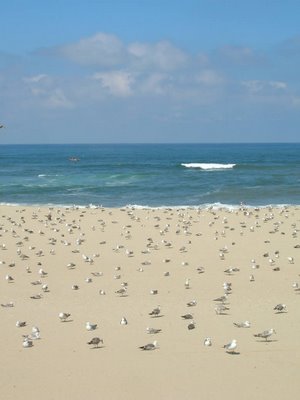 The last couple of days have been very relaxing. The sun has come out, and so we've been to the beach, dipped in the pool, played some tennis, and generally taken it easy. Espinho, where we are staying, isn't the sort of place you'd think of as a holiday destination, but it's really nicely situated, on a long, sandy beach that runs north as far as Vila Nova (the town on the other bank of the Douro from Porto).
The last couple of days have been very relaxing. The sun has come out, and so we've been to the beach, dipped in the pool, played some tennis, and generally taken it easy. Espinho, where we are staying, isn't the sort of place you'd think of as a holiday destination, but it's really nicely situated, on a long, sandy beach that runs north as far as Vila Nova (the town on the other bank of the Douro from Porto).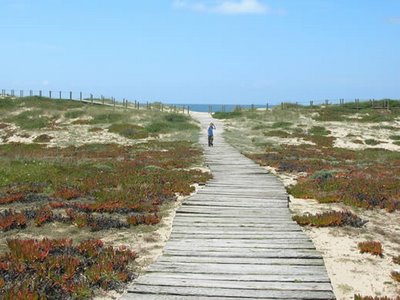

 Then we were off to Dirk Niepoort's for dinner. It was brave of him to invite all four of us over. We were joined by Niepoort general manager José Teles and winemaker Luis Seabra. Time for a cellar raid. Dirk told me and Luis to pick something interesting, but he retained the right to veto. His cellar has a lot of Riesling, white Burgundy, red Burgundy (including a couple of rows of DRC), a bit of Rhone, quite a bit of Bordeaux and lots of old Portuguese bottles, as well as plenty of Port and Madeira.
Then we were off to Dirk Niepoort's for dinner. It was brave of him to invite all four of us over. We were joined by Niepoort general manager José Teles and winemaker Luis Seabra. Time for a cellar raid. Dirk told me and Luis to pick something interesting, but he retained the right to veto. His cellar has a lot of Riesling, white Burgundy, red Burgundy (including a couple of rows of DRC), a bit of Rhone, quite a bit of Bordeaux and lots of old Portuguese bottles, as well as plenty of Port and Madeira.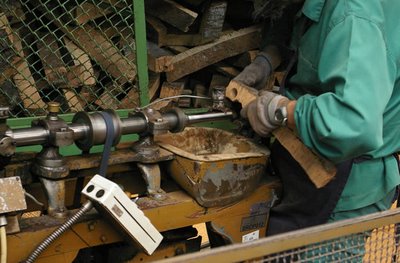
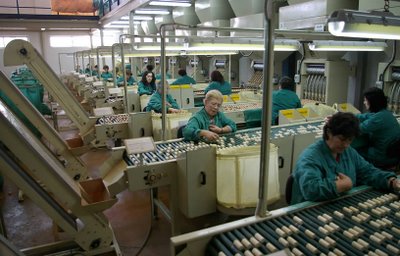
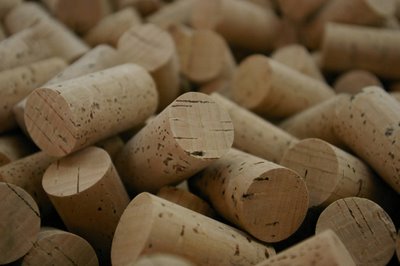
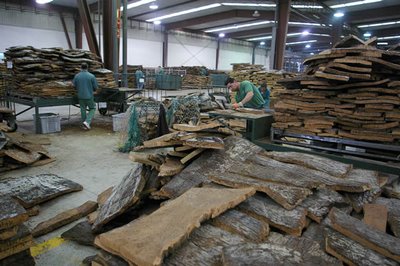
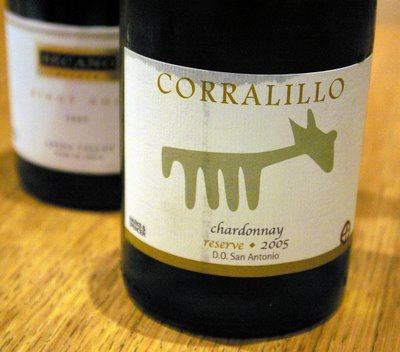
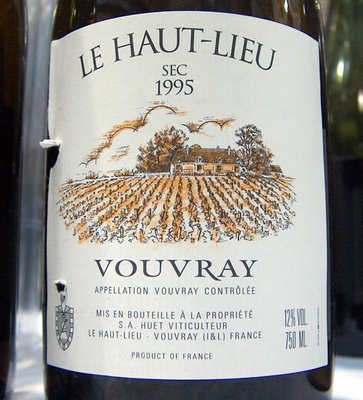
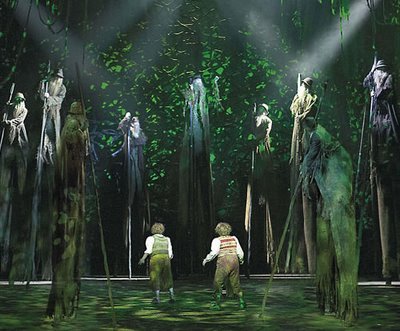
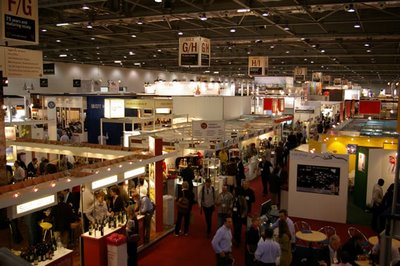
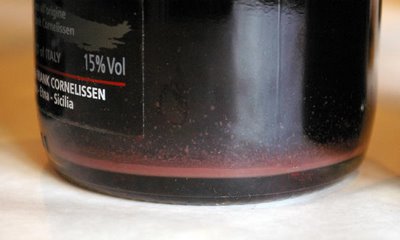
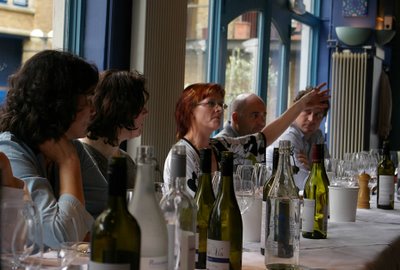

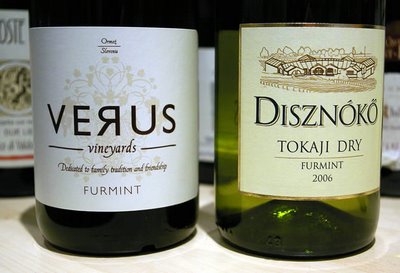
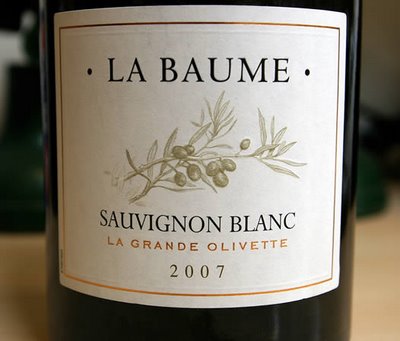
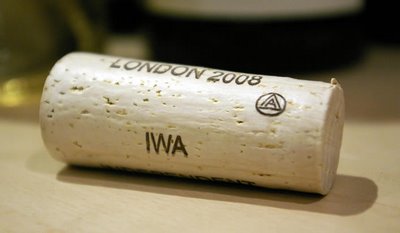
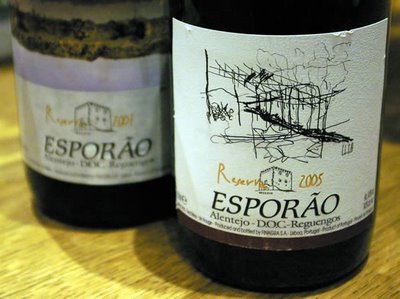
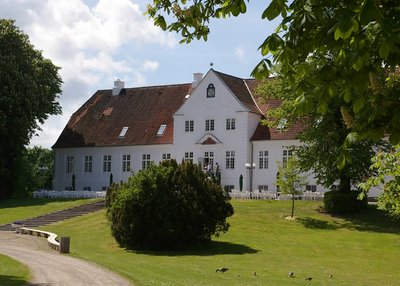
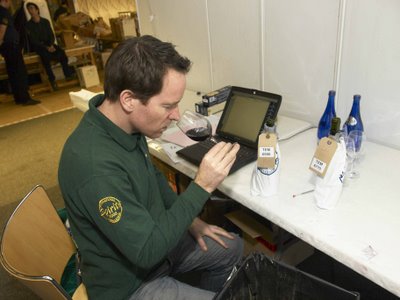
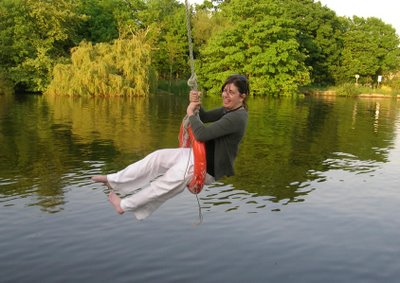
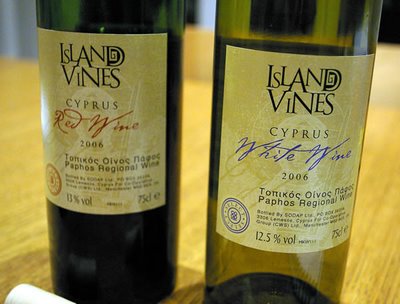
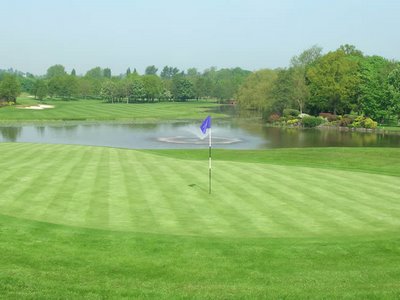
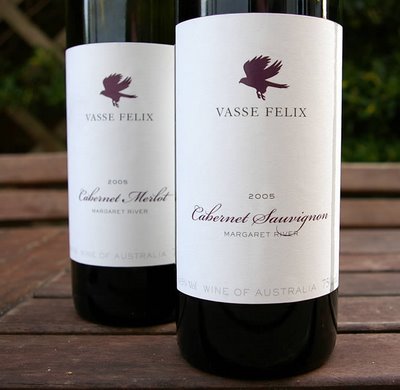
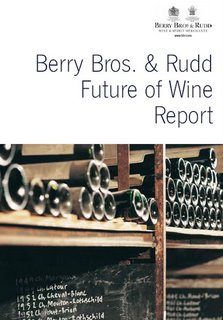
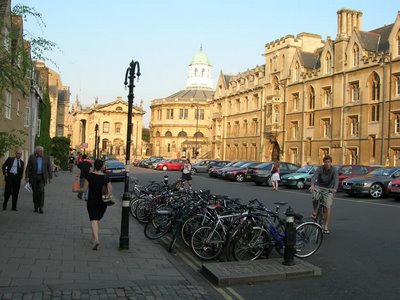
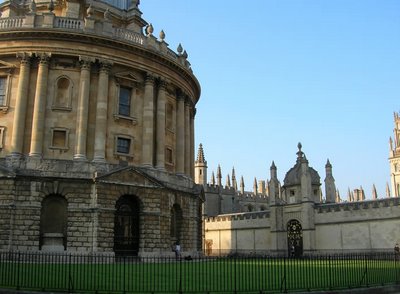
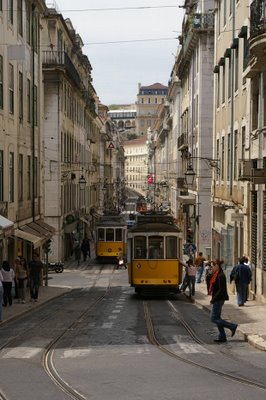
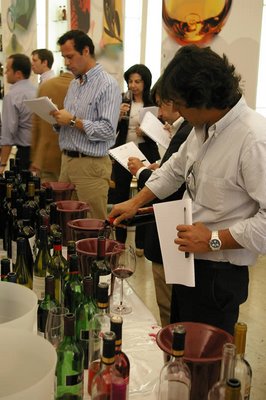
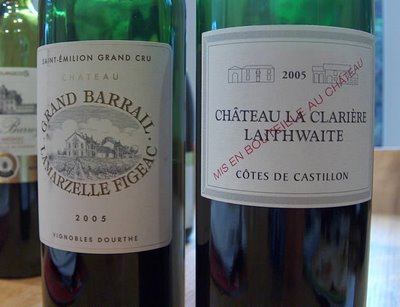
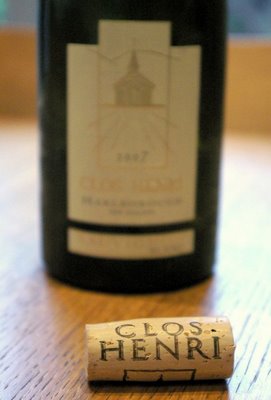
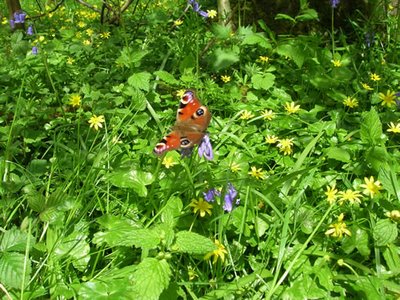

 The web log of wine journalist Jamie Goode. Feel free to nose around; your comments are welcome
The web log of wine journalist Jamie Goode. Feel free to nose around; your comments are welcome 
